If you’re in search of blissful beaches, look no further than Fuerteventura. The second largest of Spain’s Canary Islands, an Atlantic Ocean archipelago off the coast of southern Morocco, Fuerteventura is home to some spectacular coastal stretches.
Fuerteventura beaches are among the best in the world for their golden hue and silky-soft texture. The island also boasts year-round sunshine, a wind-beaten shoreline perfect for surfing (some believe the name Fuerteventura translates as a variation of “strong wind”), and the largest dunes in the Canary Islands within its Corralejo Natural Park.
Discover the 16 best beaches in Fuerteventura.
El Cotillo Beach
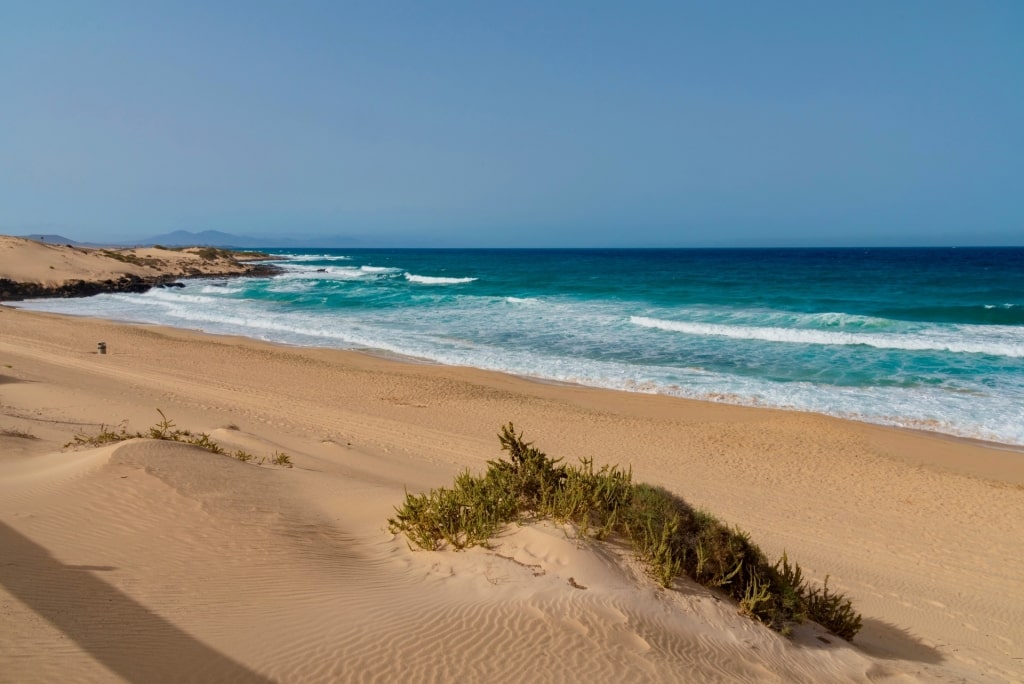
El Cotillo Beach
El Cotillo Beach lies in the northeast of this long and narrow island. A tantalizing 700-foot sweep of creamy-white sand and calm turquoise water makes El Cotillo one of the best beaches in Fuerteventura.
El Cotillo is sandwiched between rock formations that create a series of coves on either side, including, from north to south, La Concha, Playa de Marfolin, and Playa De Los Lagos. Sink your toes into the sand and breathe in the fresh Atlantic air as you wander between the neighboring beaches.
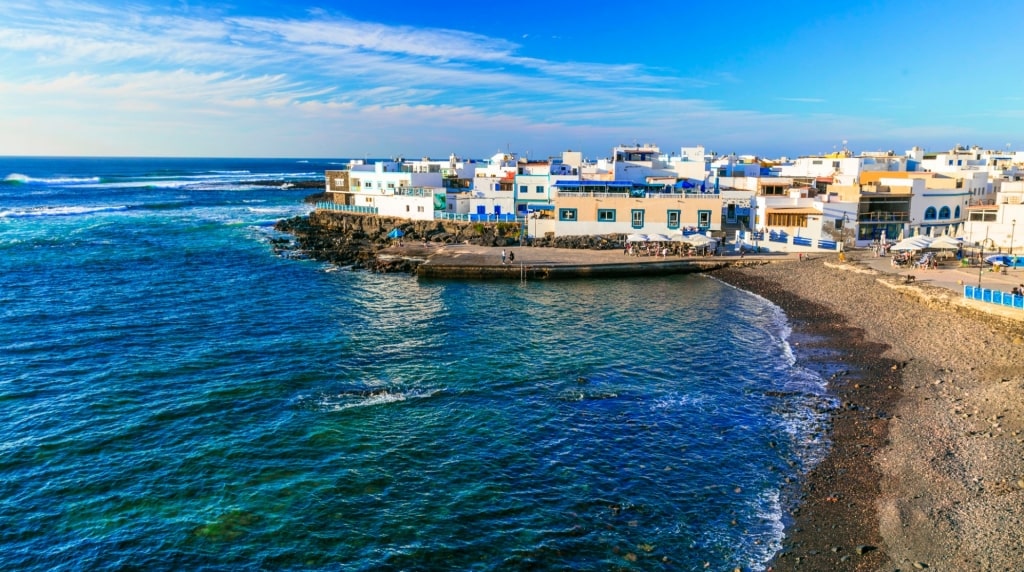
El Cotillo
Although El Cotillo is popular among beachgoers, the area retains an unspoiled feel as it’s not overly not built up. In El Cotillo village, you’ll find a cluster of restaurants, a couple of independent shops, and surf schools providing lessons and courses.
Read: Awe-Inspiring Things to Do in the Canary Islands
Popcorn Beach
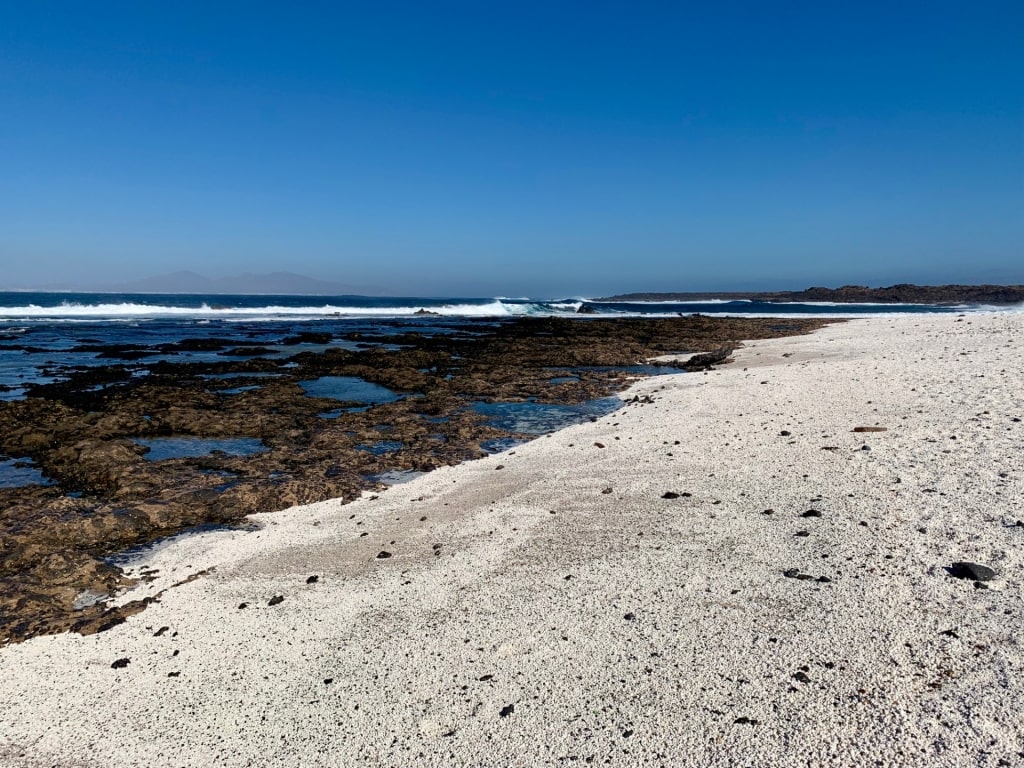
Popcorn Beach
Officially called El Hierro Beach, Popcorn Beach lies on the northern tip of Fuerteventura. The shore is made up of ash-colored sand littered with tiny white fragments of coral—the result of Coralline algae mixing with sand—that resembles popcorn.
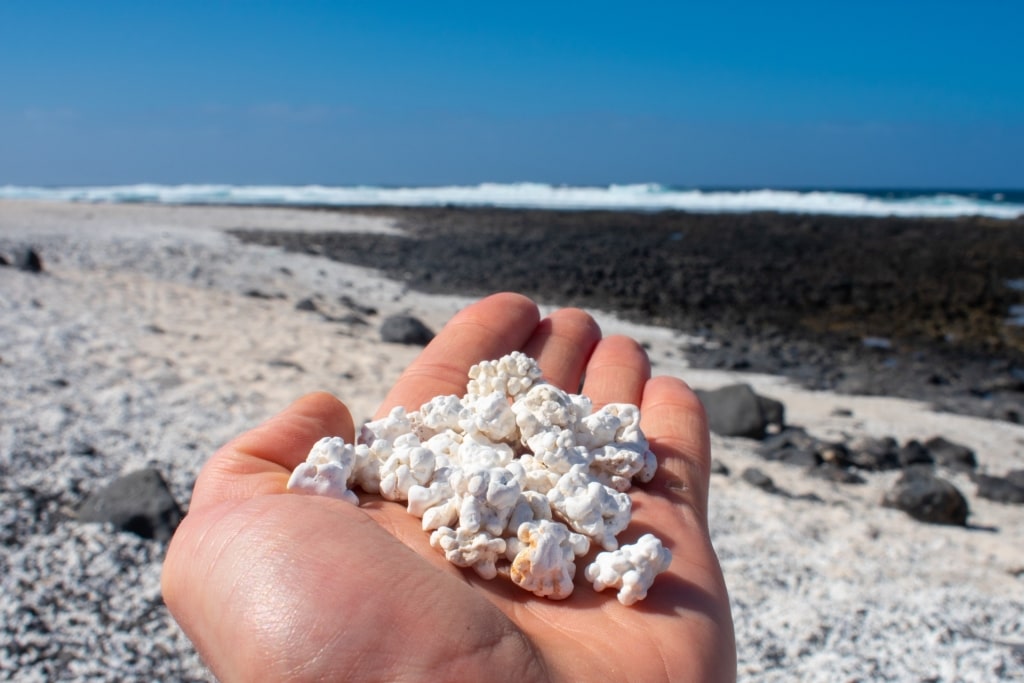
Popcorn Beach
The coral, known as Rhodoliths, grows incredibly slowly underwater at a fraction of an inch each year. Discover a 10-inch piece of Rhodoliths, and it’s likely to have been growing for 250 years. While still underwater, the coral absorbs carbon dioxide from the sea, giving it a high environmental value.
There’s little else on or near the Popcorn Beach, but it’s worth the journey to the north to marvel at its unique texture, which is unlike other beaches on the Spanish island.
Playa de Cofete
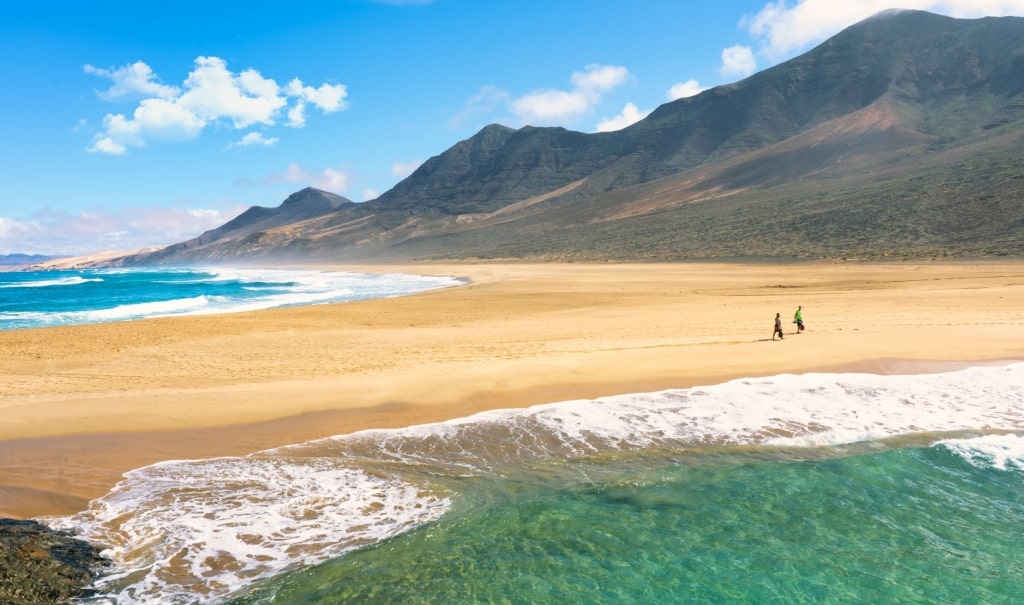
Playa de Cofete
Flanked by Jandía Nature Reserve’s towering mountains, Fuerteventura beaches don’t get more dramatic than Playa de Cofete. This outstanding beauty spot is a wild, seven-mile stretch near the island’s southwest peninsula.
With no sign of a hotel, condo, or any other facility, Playa de Cofete offers travelers a peaceful and carefree day at the beach. Getting to this remote Spanish beach is an adventure, reached via a five-mile dusty dirt road. There’s a parking lot at the entrance to the beach.
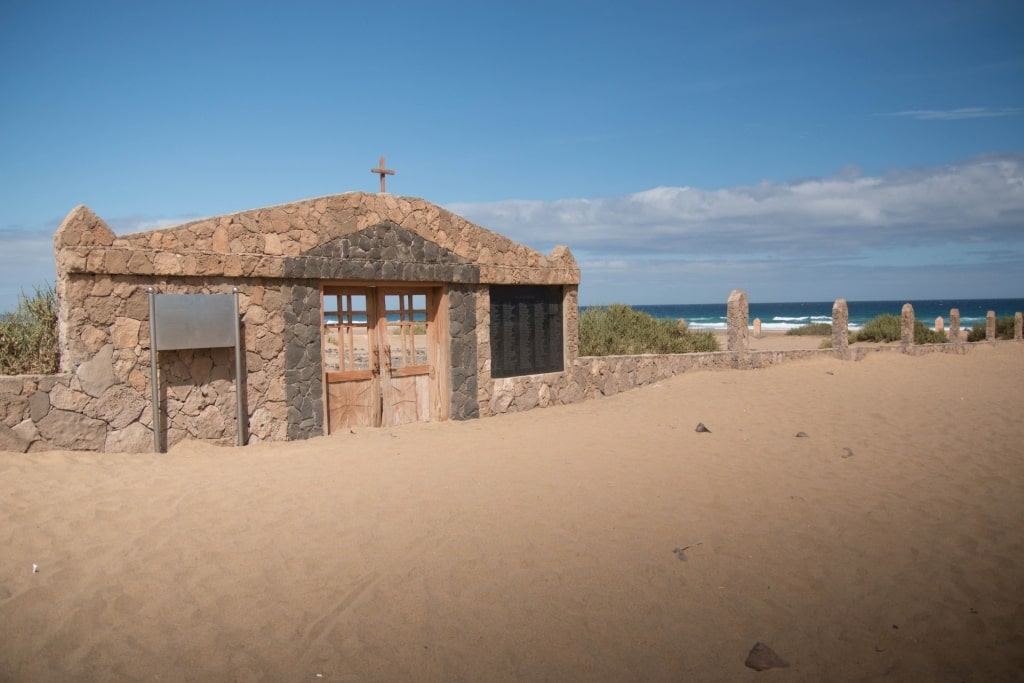
Cofete
Soak up the ocean views and enjoy a long walk on one of the best beaches in the Canary Islands. Be careful if you venture into the water. The current is strong and waves can be powerful. There’s a travelers’ rest, Restaurante Cofete Pepe El Faro, in Cofete village. Stop for a morning coffee on your way to the beach and a rustic lunch after.
Playa Del Mal Nombre
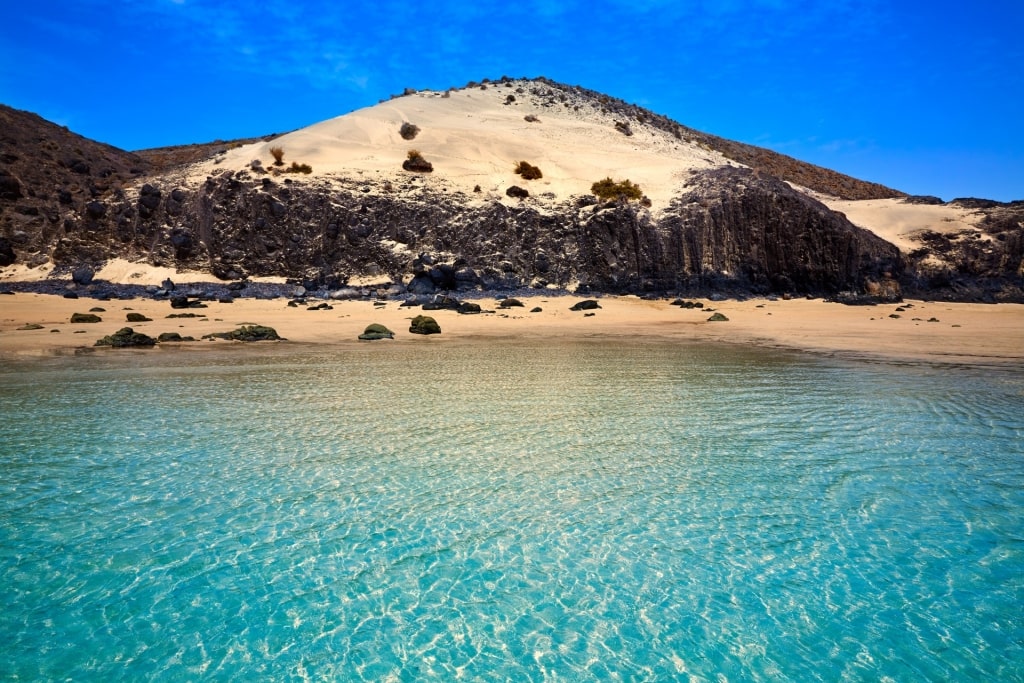
Playa Del Mal Nombre
Good-looking Playa Del Mal Nombre lies on Fuerteventura’s rugged southeast coast. Backed by a series of large, jagged cliffs, Playa Del Mal Nombre is one of the best Fuerteventura beaches.
There’s a beach bar and restaurant on the shore, providing all that you need for a laid-back day listening to the sound of the waves.
Surprisingly, the untamed beauty of Playa Del Mal Nombre fails to attract many visitors, which means you might find yourself with a swathe of sand all to yourself.
Playa del Matorral
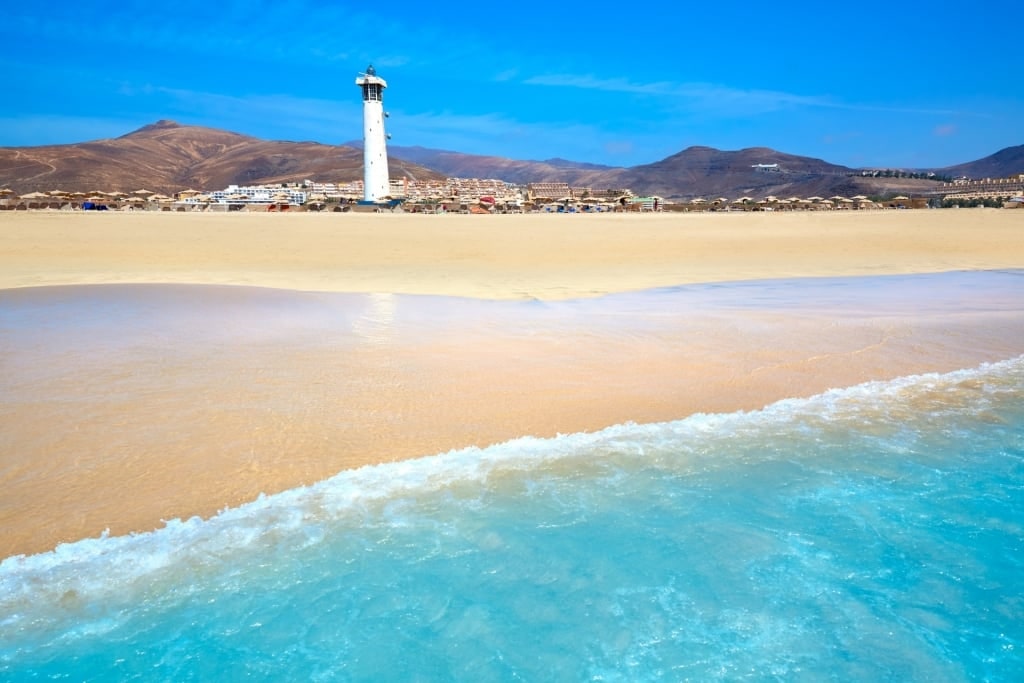
Playa del Matorral
Tucked down on the southern tip of the island in Morro Jable, El Matorral is another beautiful Fuerteventura beach. An eight-mile strip with tall, curving dunes and attractive palm trees, the water is deliciously clear and calm enough for swimming.
The clothing-optional section of Playa del Matorral is typically quieter, with other patches invariably busier, though still fairly relaxed and peaceful compared with the big resorts of the other Canary Islands.
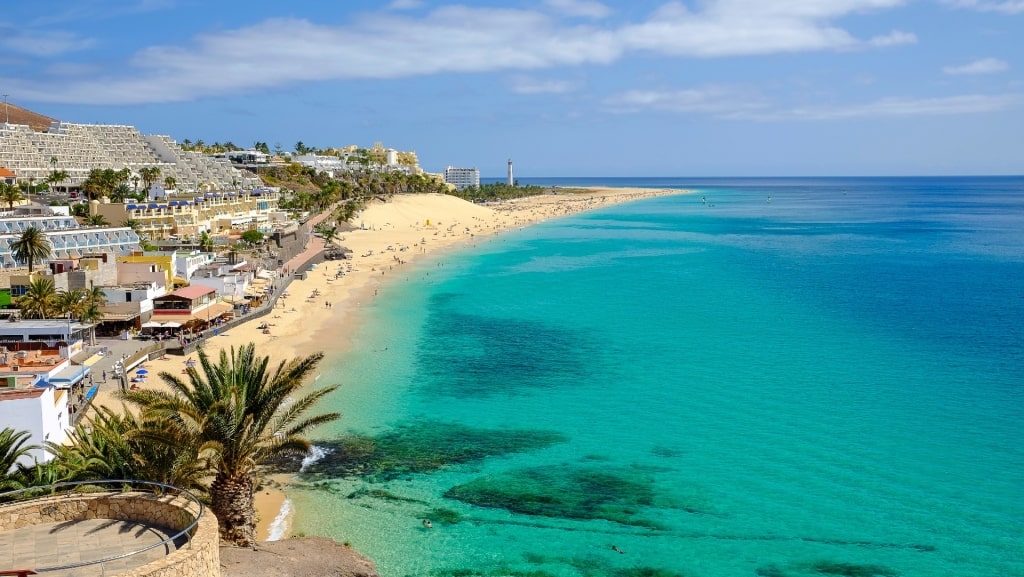
Playa del Matorral
You’ll find various facilities on Playa del Matorral, including deckchairs and parasols, watersports, beach kiosks, and nearby restaurants. Morro Jable’s marina is a 25-minute walk south, which you can reach by continuing along the beach.
Here you’ll find catamaran and boat tours that will take you searching for marine life, including sea turtles, dolphins, and pilot whales.
You could also enjoy a stroll around the tall, white Morro Jable Lighthouse next to Saladar de Jandía, a marshy wetland that’s a protected reserve. Stick to designated paths to help protect the local wildlife, including nesting marine birds.
Follow the circular route around the salt marsh from the beach and look for an array of species, including lizards and geckos.
Alzada Beach
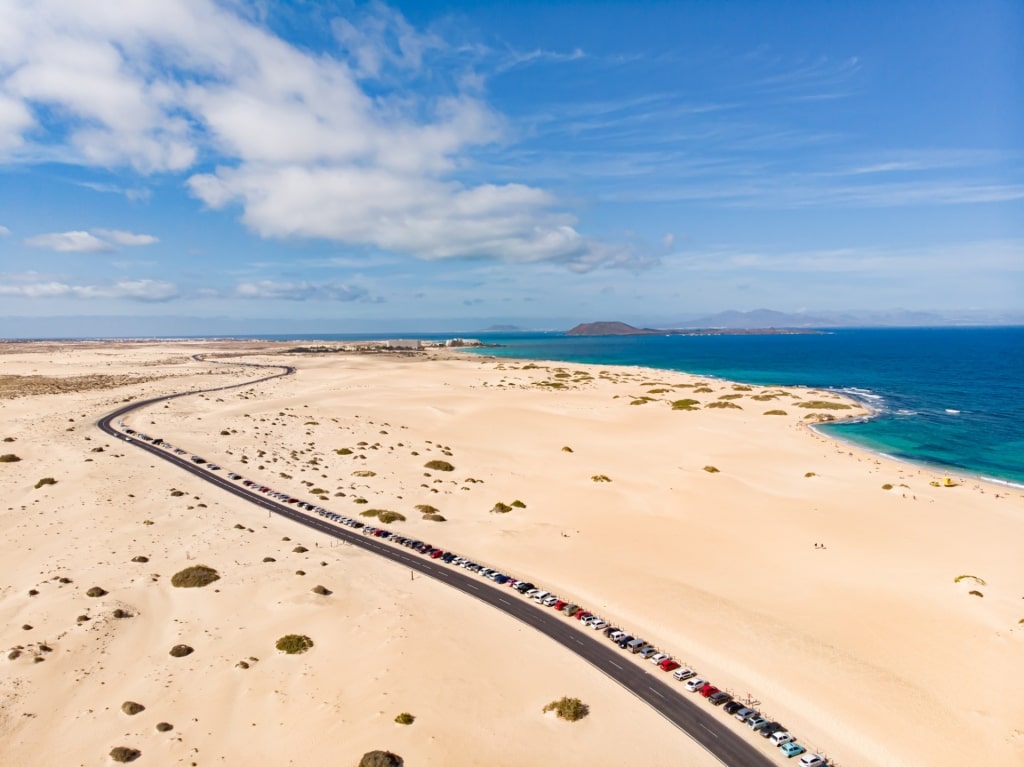
Alzada Beach
On the edge of the vast Corralejo Natural Park in northeast Fuerteventura, Alzada Beach feels like an untouched paradise.
Alzada is one of the best beaches in Fuerteventura to visit on a day trip from the capital, Puerto del Rosario. The FV-1a coastal road leads directly north, making the beach an effortless 20-minute drive.
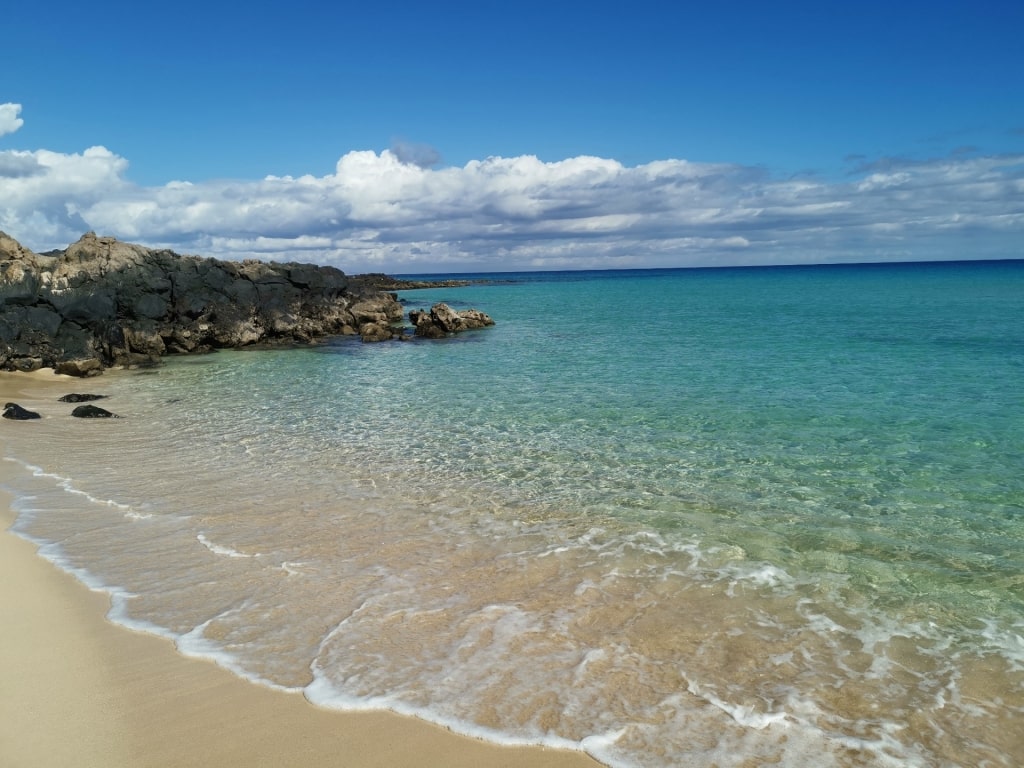
Alzada Beach
If you’re a traveler who prefers to use local transport over hiring a car or taxi, two bus lines (6 and 7) operate along this route. With no services or facilities on the beach, you’ll want to pack refreshments.
Look out for surfers breaking waves and enjoy a paddle on the foreshore. If you’re game for a hike after visiting the beach, tag on a trip to Montaña Roja, a short drive south of Alzada Beach.
The summit is just under 1,000 feet up and offers eye-popping island views. On a clear day, you should see the neighboring island of Lanzarote.
Sotavento Beach
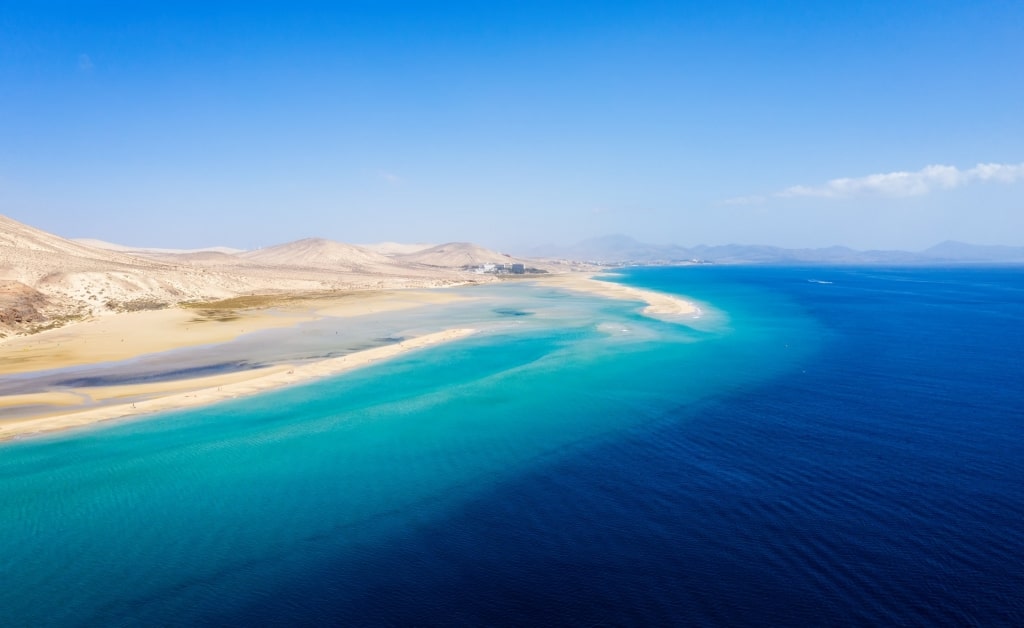
Sotavento Beach
Sotavento and its beguiling turquoise lagoon is arguably the best beach in Fuerteventura.
There are more than five miles of soft sand to explore and a wealth of watersports to try on this southeastern beach.
A sand barrier just off the shore creates Sotavento Beach’s almost-two-mile pool, where windsurfing and kitesurfing lessons take place during high tide. If you’re more in the mood for relaxing, find a tranquil patch to stretch out and soak up the gentle murmur of the waves.
Grandes Playas Corralejo
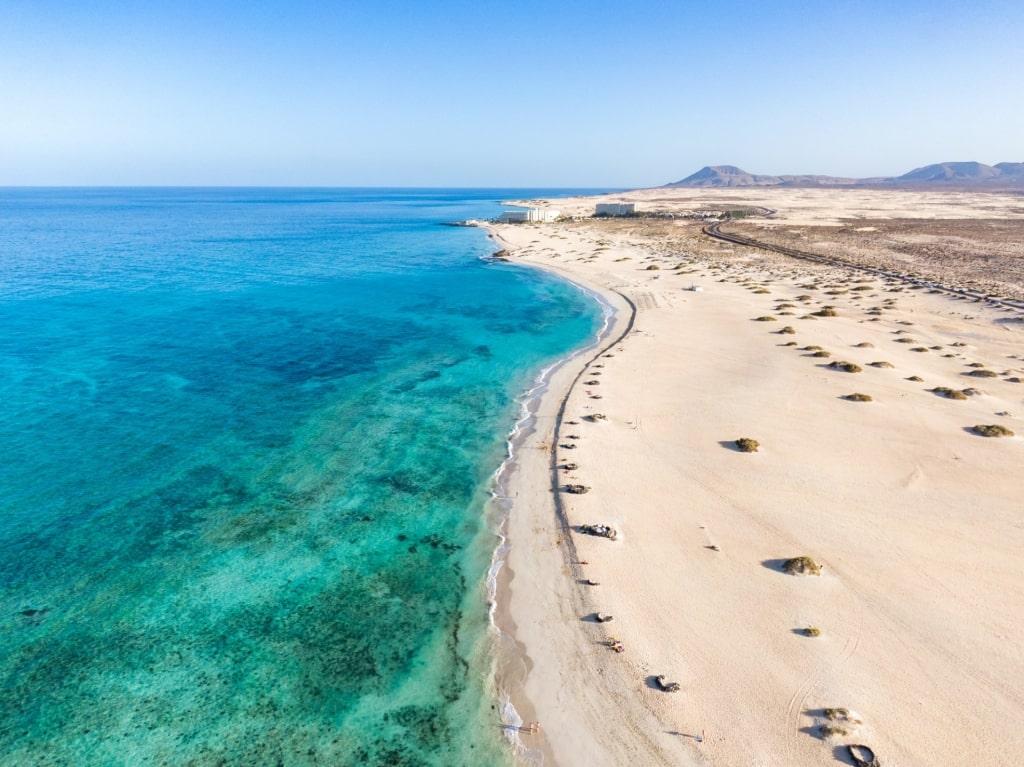
Grandes Playas Corralejo
Step onto the honey-colored shore of Grandes Playas Corralejo in the northeast of Fuerteventura to experience some of the silkiest sand on the island. The five-mile beach is bordered by Corralejo Natural Park, where you’ll find the Corralejo Dunes, the largest dunes in the Canary Islands.
Explore Corralejo Dunes on foot, ensuring you’re wearing plenty of sun protection. Afterward, head across the road to the beach and wash the sand away in the cooling blue Atlantic waters.
Don’t forget your camera. The dunes here offer a visual feast and you’ll want to capture them.
Playa del Pozo
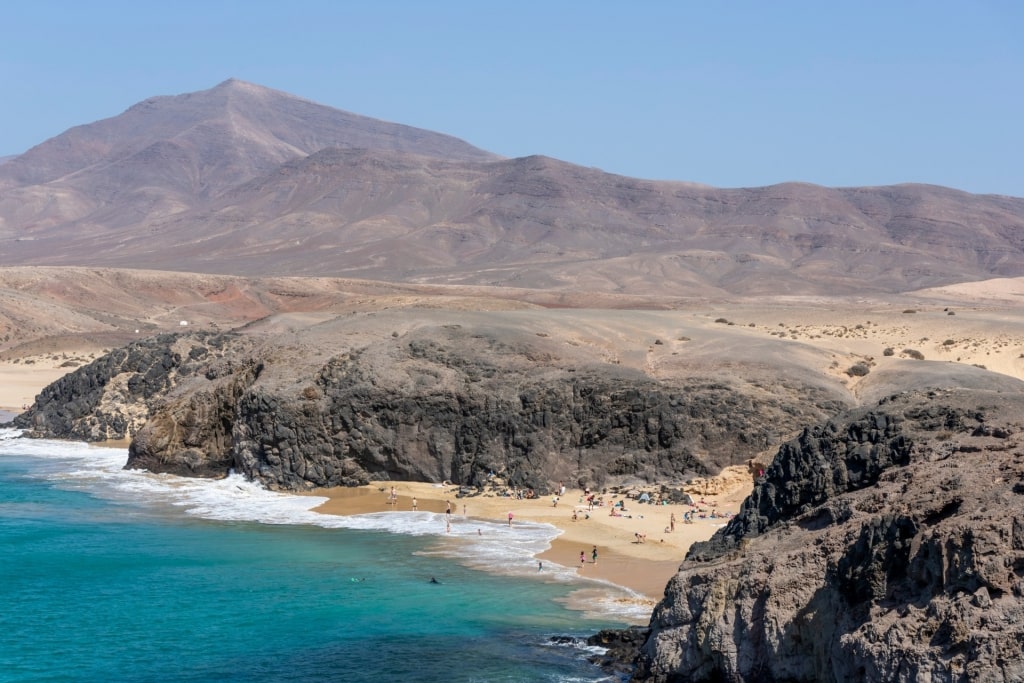
Playa del Pozo
One of a cluster of beaches just north of Grandes Playas Corralejo, Playa del Pozo lies on the northeast tip of the Corralejo Dunes, facing Lobos Islet, a small island and nature reserve just off Fuerteventura’s mainland.
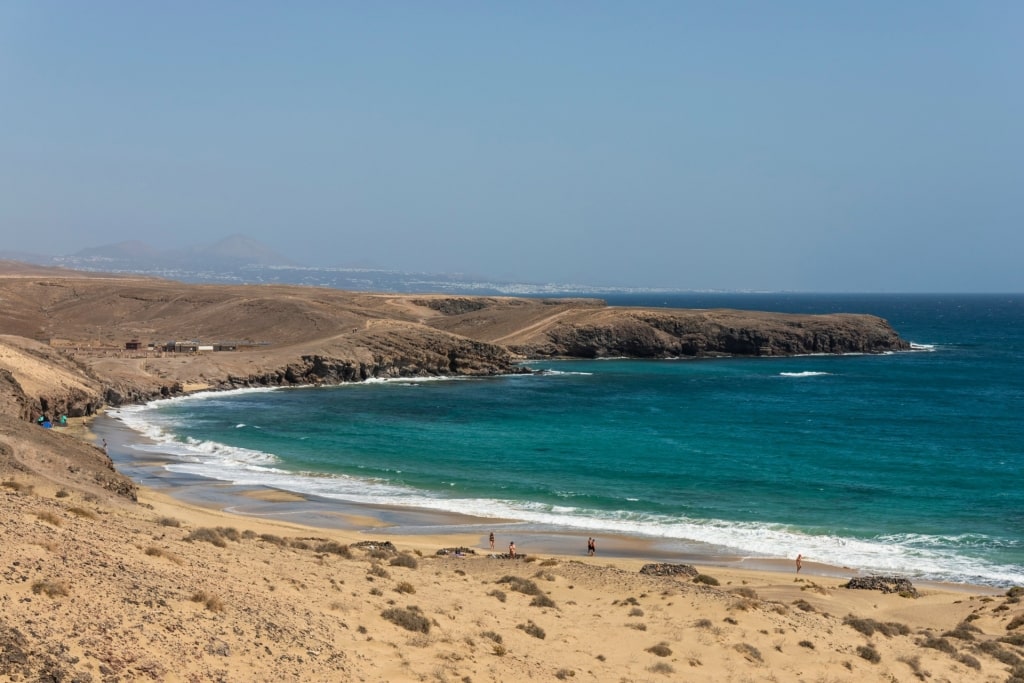
Playa del Pozo
What makes this one of the best beaches in Fuerteventura is the abundance of watersports facilities and the idyllic setting. Not all Fuerteventura beaches are suitable for swimming, but on Playa del Pozo you can dip in and out of the shallow azure water as you please.
Watersports are popular here, including windsurfing and kitesurfing.
Playa del Castillo
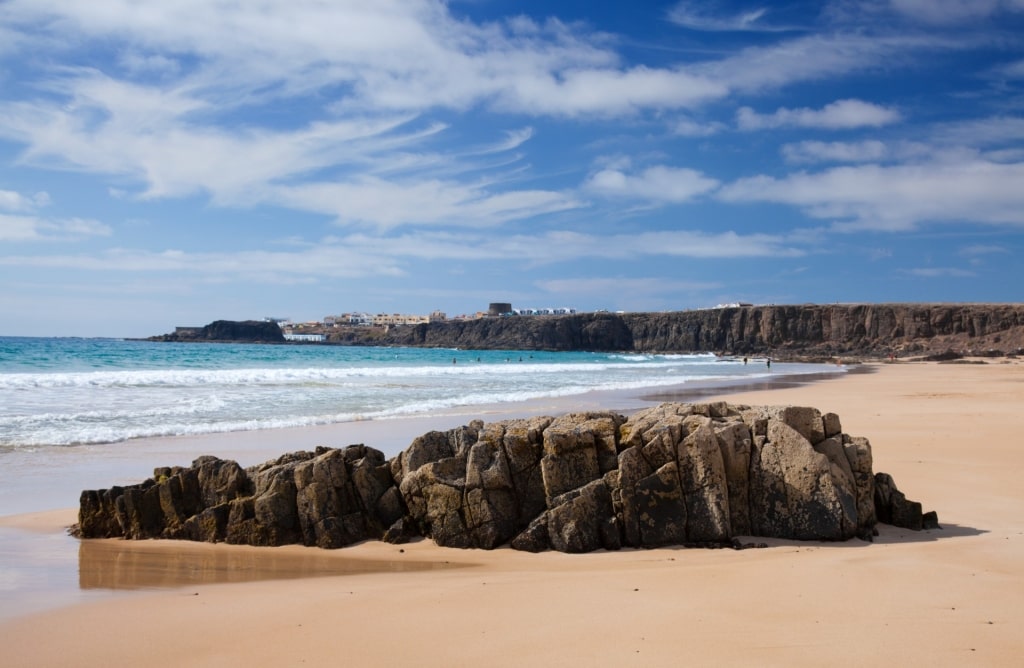
Playa del Castillo
A short distance south of Puerto del Rosario, El Castillo lies in a small horseshoe-shaped cove in Caleta de Fuste, with balmy water that’s ideal for swimming.
The family-friendly beach, named after the nearby 18th-century circular fort, boasts excellent amenities, including transport connections, sunbeds, sun shades, restaurants, bathrooms, and watersports.
There’s also an immaculate promenade lined with palm trees and a marina to the north of the beach, from which daily catamaran boat tours depart.
Jet ski rental, submarine excursions, and diving classes are also available from Castillo’s marina if you’re feeling more adventurous
Playa de Los Verilitos
In the thick of Corralejo, Playa de Los Vergelitos is one of the best beaches in Fuerteventura for its selection of sun-dappled beach bars, laid-back restaurants, and facilities such as kayaking and stand up paddleboarding.
The attractive crescent-shaped beach provides plenty of space to stretch out under a parasol and gaze out across to Lobos Islet. Enjoy a walk to the adjoining beaches of Playa de la Goleta and Playa del Medio to stretch your legs.
La Concha Beach, Lobos Islet Natural Park
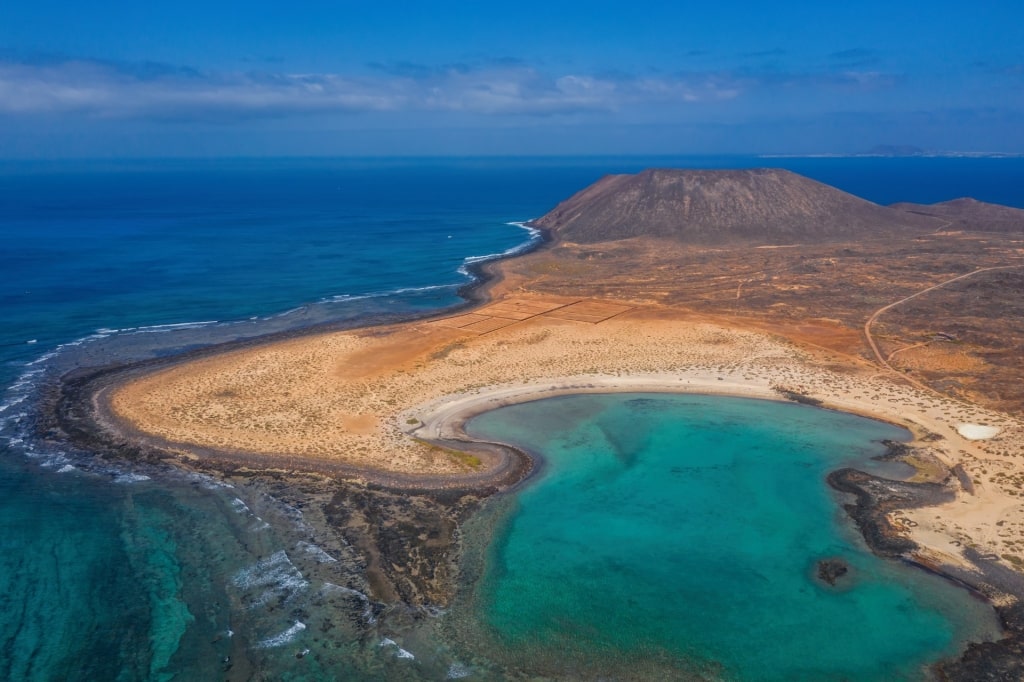
La Concha Beach, Lobos Islet Natural Park
For an off-the-beaten-path beach adventure, head to Corralejo’s marina and take the ferry to Lobos Islet Natural Park. The 15-minute jaunt to this tiny island is a breeze, with wonderful views of Fuerteventura’s coastline.
When you arrive on the islet, follow the path from the pier to La Concha, a crescent-shaped beach with vivid aquamarine water.
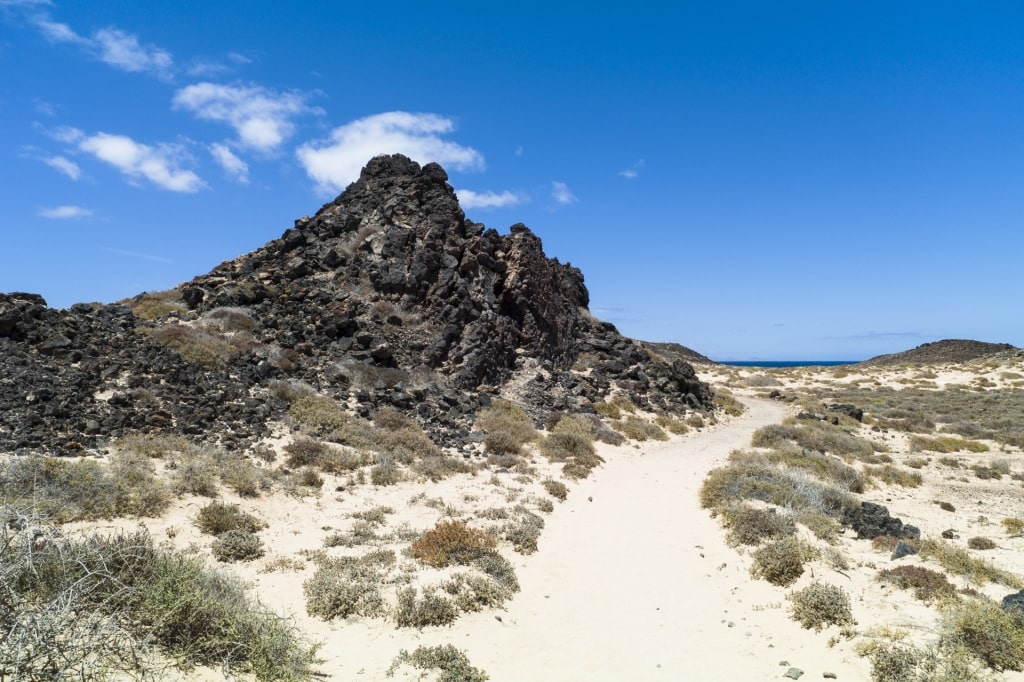
Lobos Island
The protected nature reserve of Lobos Island is less than three square miles, making it easy to explore on foot.
There are some fantastic hiking trails around the island with excellent views of Lanzarote and Fuerteventura’s famous dunes. If you opt to go for a hike, look out for a range of nesting seabirds, though keep a safe distance.
Migratory birds found on Lobos include common tern, gray heron, and curlew.
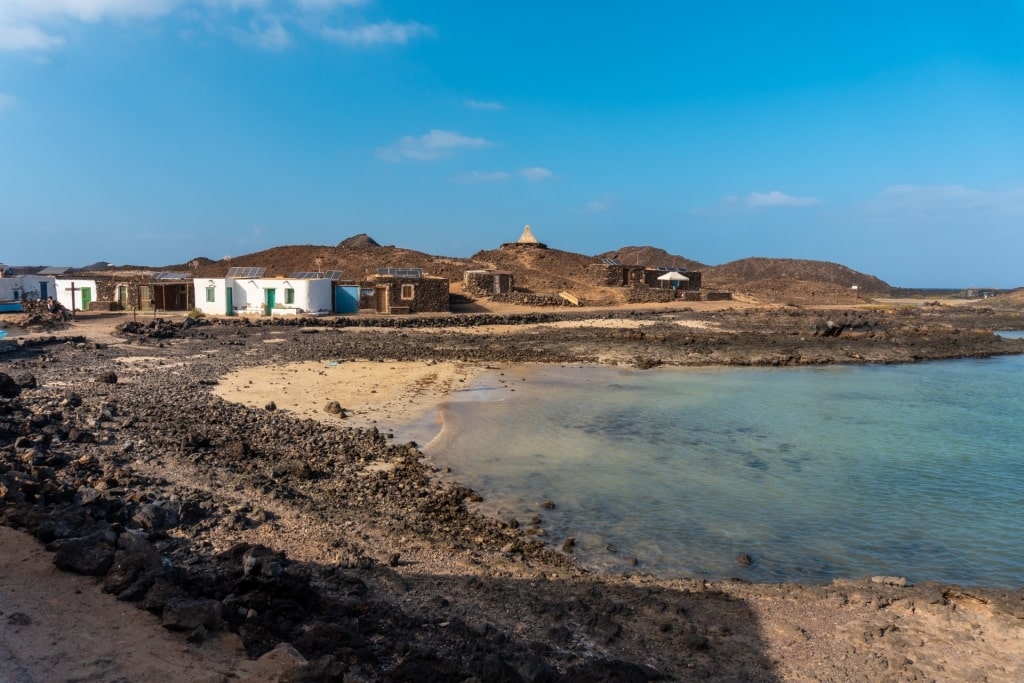
Puertito
Enjoy a short hike to the rustic fishing village of Puertito, on the opposite side of the island to La Concha. There’s a single restaurant here, Chiringuito Lobos Antoñito El Farero, known for serving the freshest fish imaginable.
Playa del Aguila
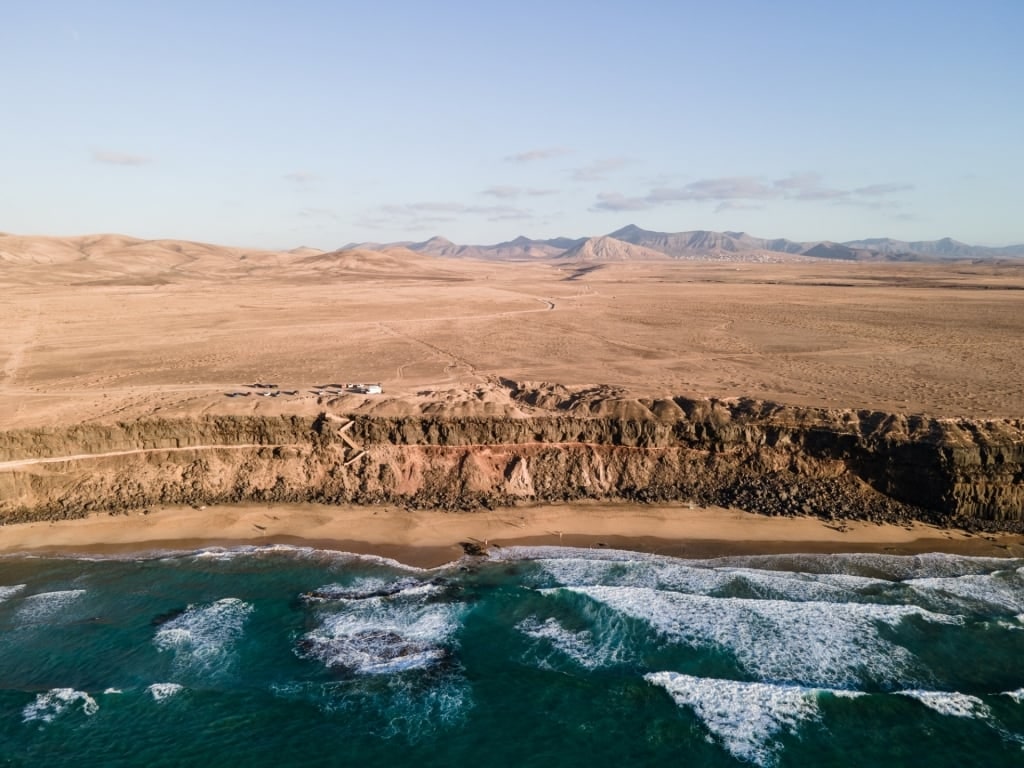
Playa del Aguila
Huddled among steep cliffs, the isolated Playa del Aguila, which translates as Eagle Beach, lies on the knockout northwest shore of Fuerteventura. Tricky to get to, Aguila is a peaceful spot, void of facilities and crowds.
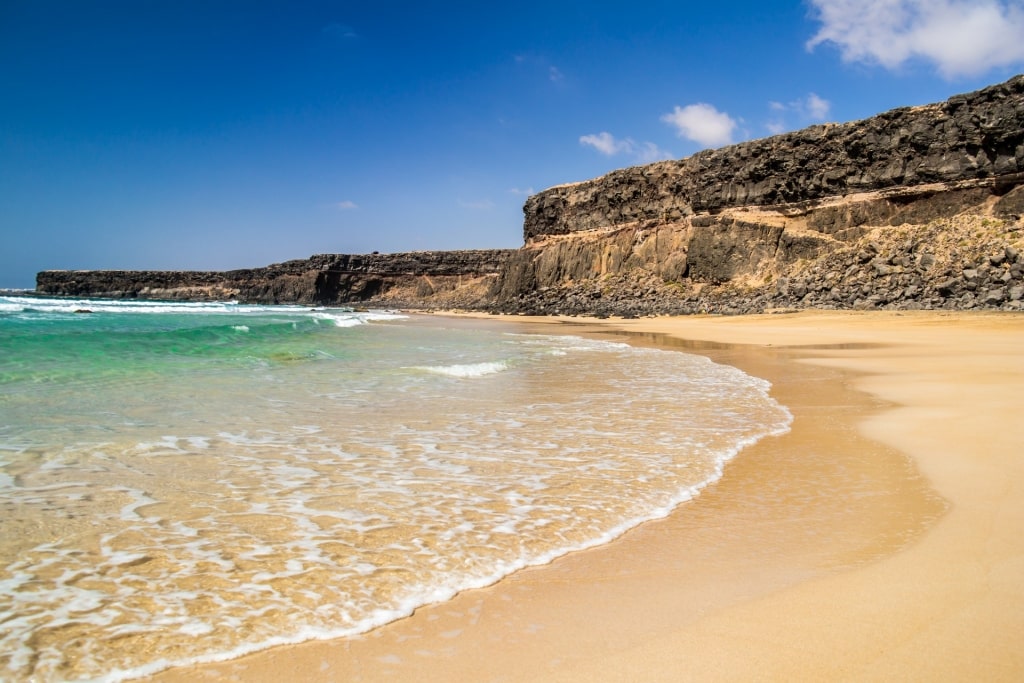
Playa del Aguila
Playa del Aguila is just under 2,000 feet long, though, at high tide, you’ll struggle to find any trace of the beach as it’s submerged in water. There’s no bus service to Aguila, so you’ll need to drive, which takes roughly 40 minutes from Puerto del Rosario.
Park at the top of the cliff and make your way down at low tide. You may find you have the entire beach to yourself.
Playa de La Pared
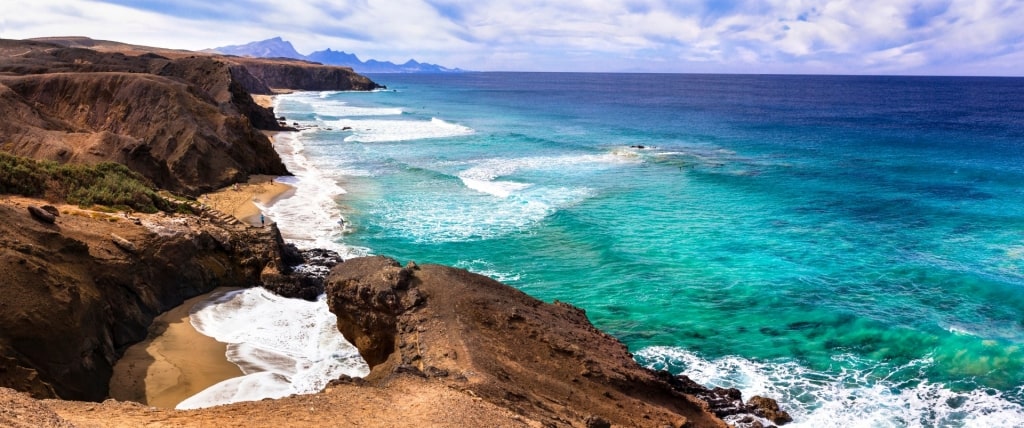
Playa de La Pared
The low-key Playa de la Pared is found on the southwest edge of Montaña Cardón National Park in La Pared. Popular with surfers for its thrilling Atlantic waves that pound the volcanic shore, the beach has a handful of surf schools offering one-day and longer courses.
Pull on a wetsuit and grab a board to give it a whirl with the help of a qualified instructor. For a more meditative experience, try a yoga class with local school Nalu Surf, which offers lessons.
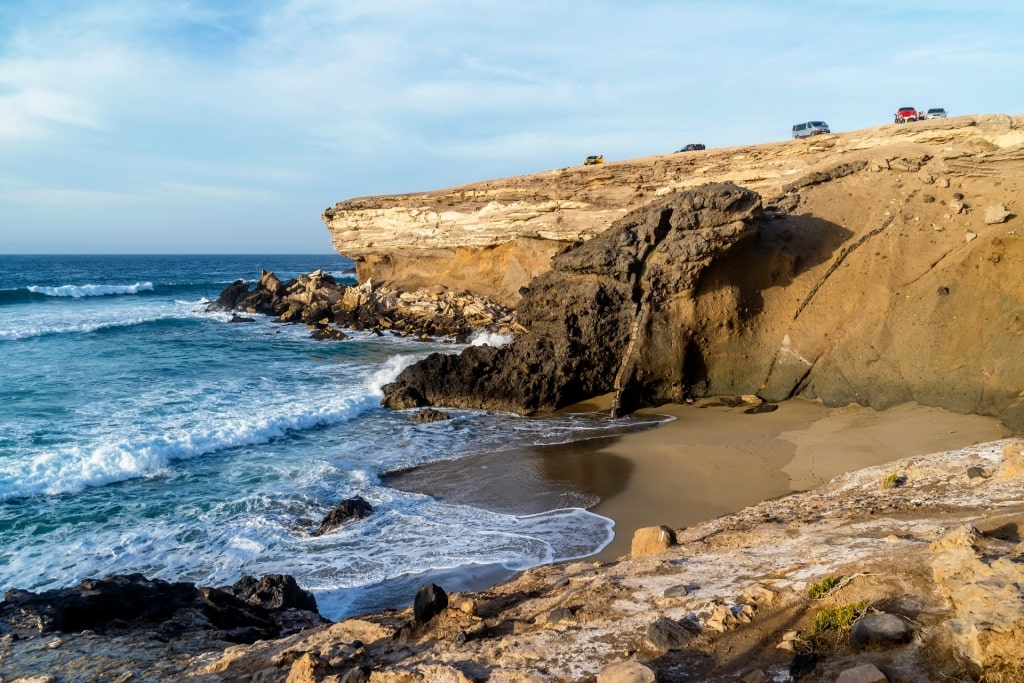
Punta Guadalupe, Playa de La Pared
Enjoy a walk to the north side of Playa de la Pared to Punta Guadalupe for jaw-dropping views of the coastline. There’s a restaurant close by, parking facilities, and a grocery store in La Pared, should you need to stock up on supplies for the beach.
Playa de Los Ojos
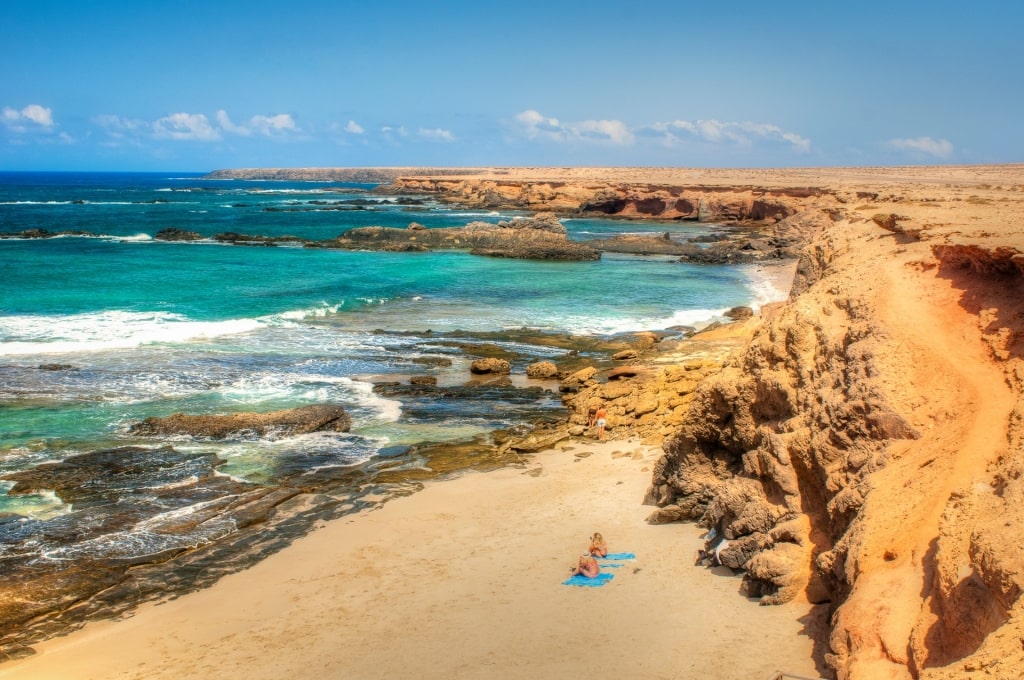
Playa de Los Ojos
This small sandy beach is just over 220 feet wide, located at the foot of Fuerteventura. Don’t be fooled by the charming scenes that greet you on Los Ojos. The waves can be extreme, making Ojos popular for surfing but unsuitable for swimming.
Pack a book and a picnic to enjoy some quality time on the sand. You could also explore Los Ojos’s sea caves to the south of the beach.
Hiring a car and driving is the best way to get here, following the signpost to the beach down an unpaved dirt track. There are some high-caliber coastal walks in this part of the island, where the cliffs seemingly drop off into the ocean.
Playa de Esquinzo
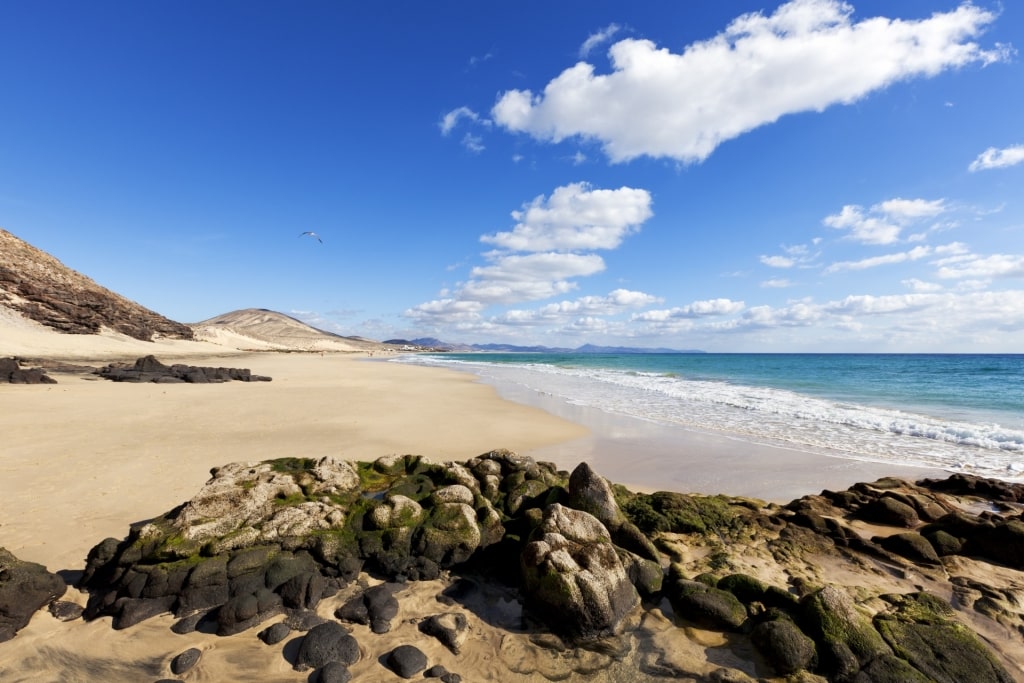
Playa de Esquinzo
Playa de Esquinzo is a golden half-moon of sand on Fuerteventura’s northwest coast, cradled in the region’s black volcanic rocks.
As a lesser-known island cove, Playa de Esquinzo is one of the best beaches in Fuerteventura for relaxing in solitude, aside from the odd group of surfers.
Enjoy swimming, sunbathing, reading, and the sea breeze on your face. There are no facilities on Esquinzo, though you’ll find shops, restaurants, and some interesting sights in the nearby towns of La Oliva and Tindaya.
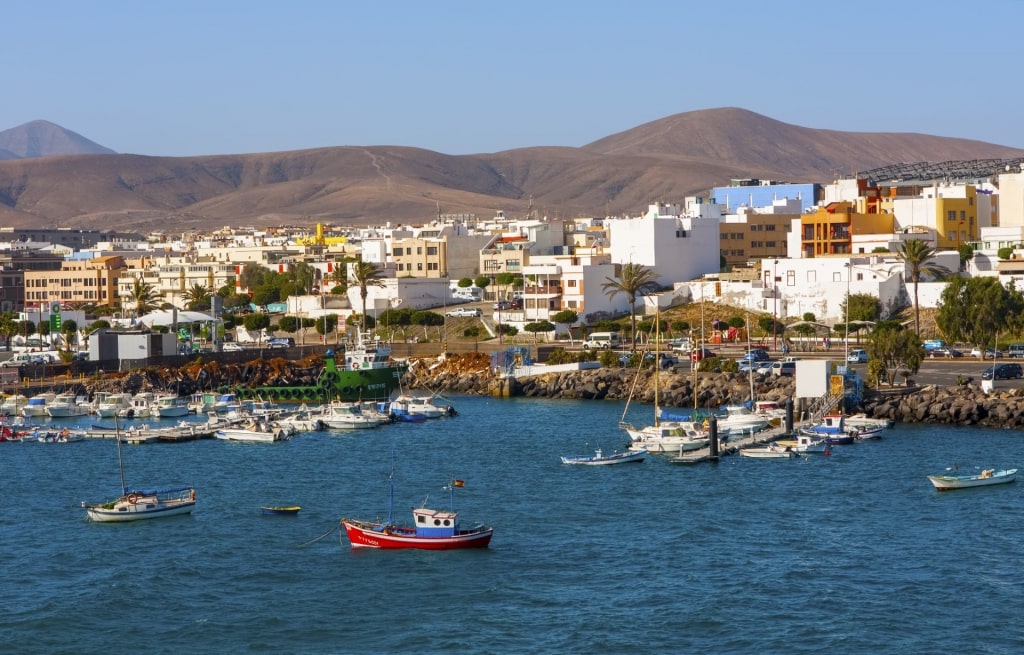
Fuerteventura
Fuerteventura beaches are sometimes wild, occasionally tame, and always beautiful. Explore Celebrity’s cruises to Fuerteventura to discover the Canary Islands’ best beaches and incredible landscapes.


